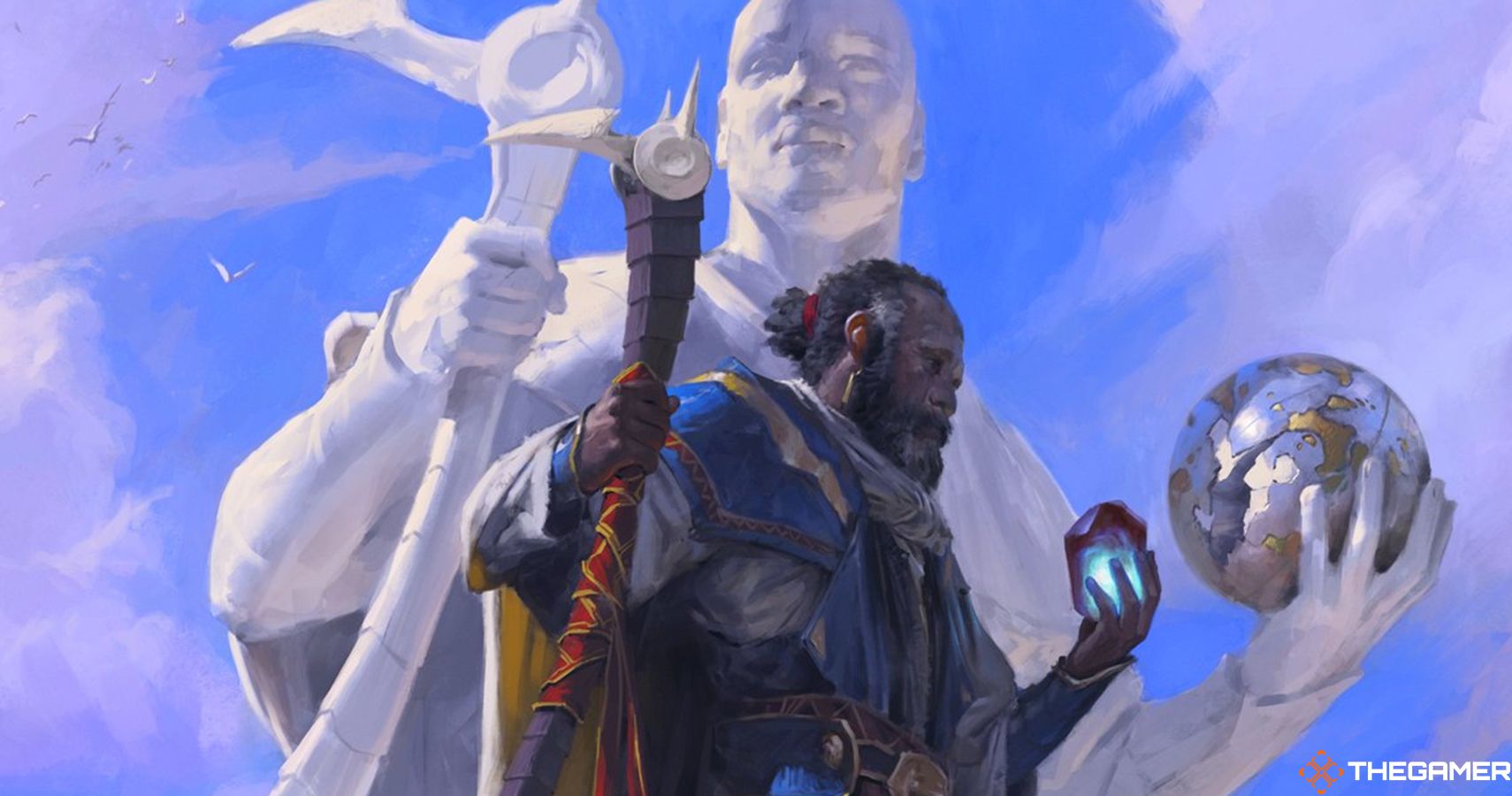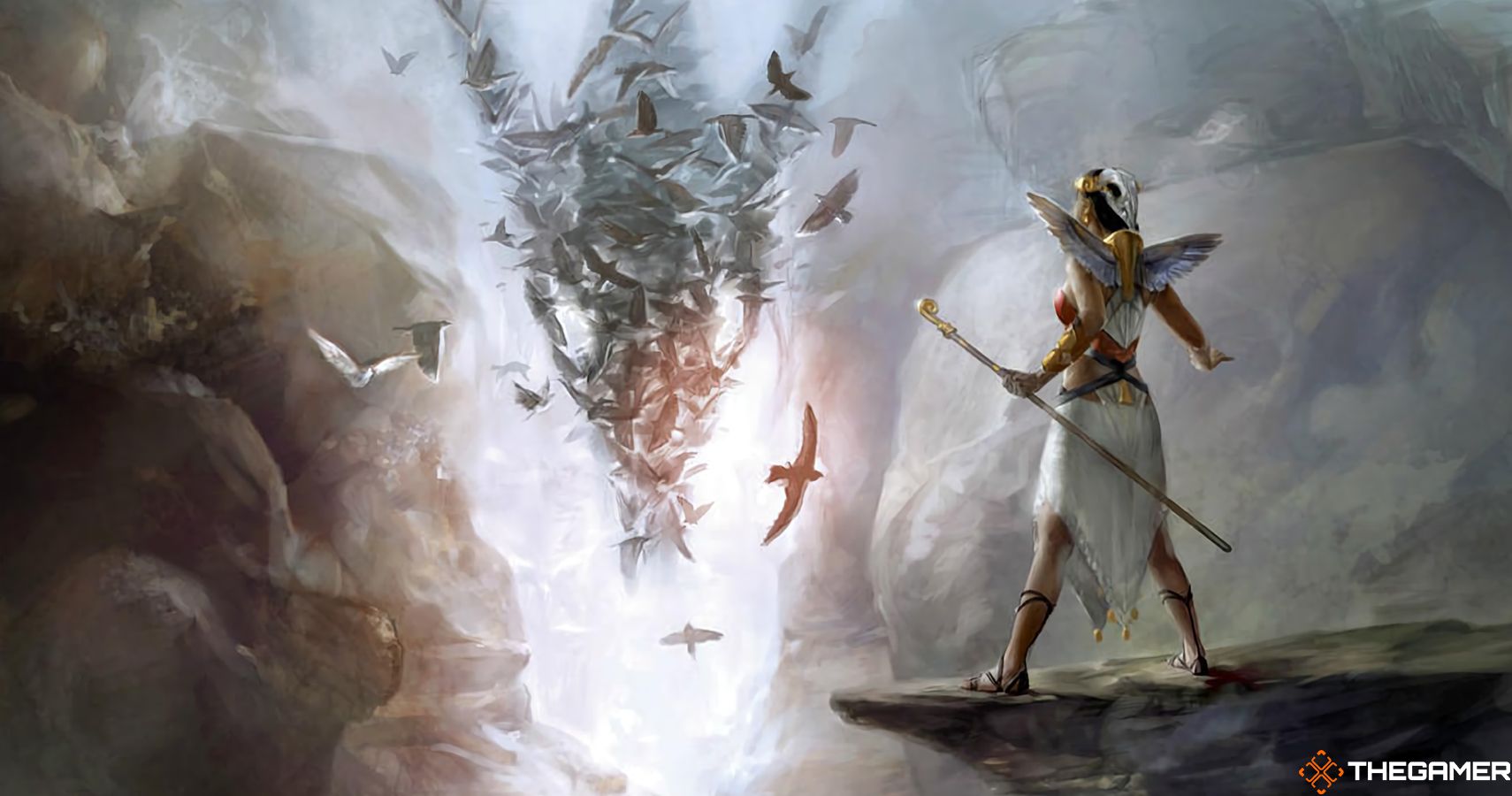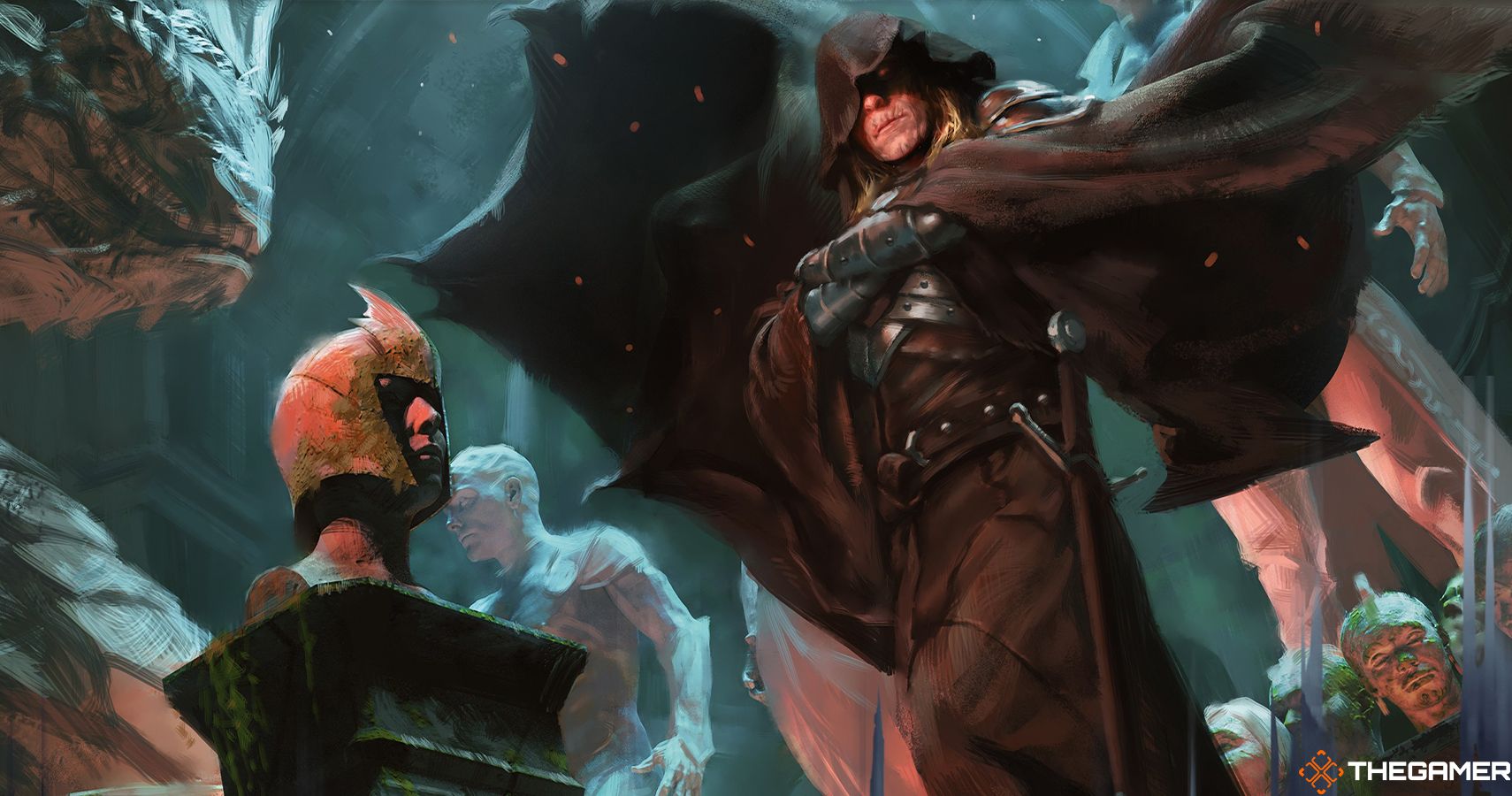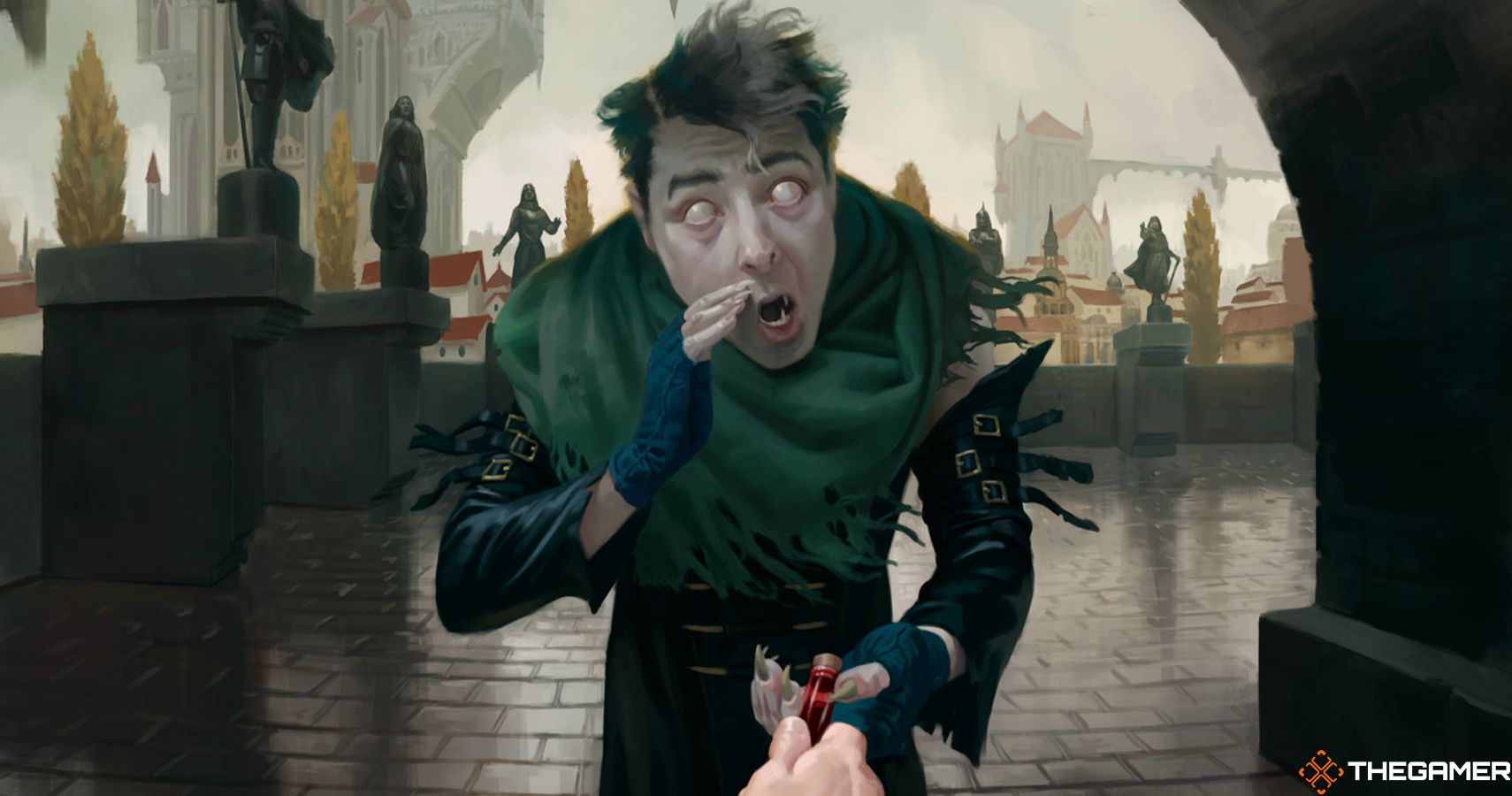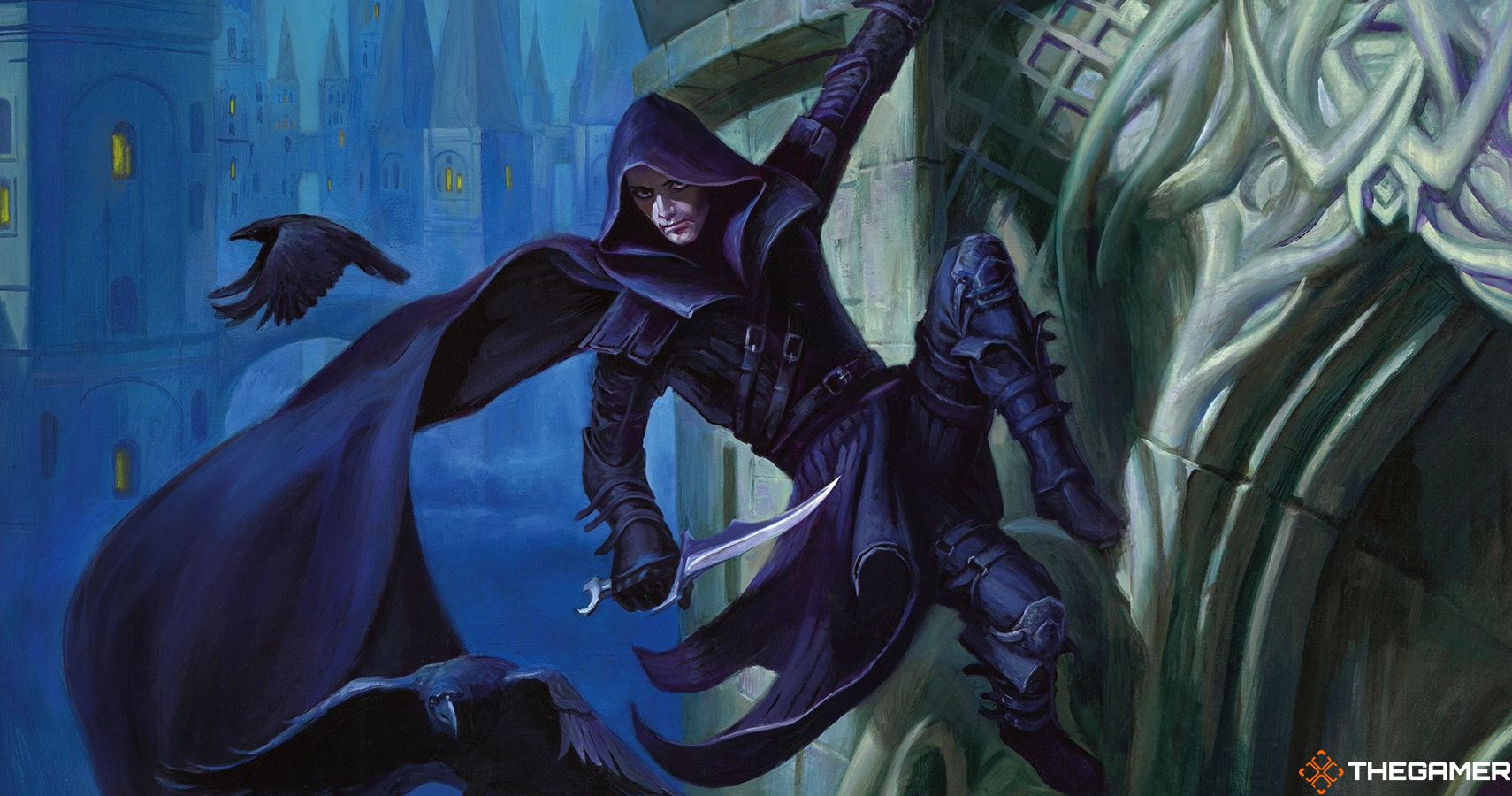Quick Links
- What Is Scry?
- How To Use Scry?
- What Colour Is Scry?
- What Is Surveil?
- How To Use Surveil?
- What Colour Is Surveil?
Scry is one of Magic the Gathering's lost-running mechanics. One of a handful of "evergreen" mechanics that is included in every set, it's considered a fundamental part of the game alongside the likes of trample and lifelink.
And yet, "scry" isn't a very descriptive word. Newcomers can struggle to know exactly what scrying, or its close and less commonly-used relative surveil – even is, let alone how to use it. Here is everything you need to know about scrying and surveiling.
What Is Scry?
Introduced way back in the 1996 expansion Alliances, before being given the name "Scry" in 2004's Fifth Dawn, scry is a keyword action (instructions to carry out a specific action that doesn't have an inherent trigger, and so can slot into all kinds of cards).
When you scry, you look at the top card of your library. Then you have a choice between keeping it on top of your library or putting it at the bottom instead.
Sometimes you might be told to scry more than one card. When you do this, you look at that number of cards from the top of your library. You can then decide where each individual card goes: one could stay on top, one could go on the bottom. You also get to decide which order those cards sit in – you could decide to keep all cards on top, but just put them back in a different order to the way you found them.
Scrying multiple cards is different from scrying multiple times. Whereas a "Scry two" will let you look at the top two cards of your library, being told to "scry one" twice will let you look at the top card, decide where it goes, and then look at the top card again. If you decide to keep the card on top in your first scry, your second one will be redundant.
New players get confused about scrying because you're not drawing the card. Once you've scried, the card will either be on top of your library ready for you to draw the next time you do so, or it'll be at the bottom of your library out of reach. Also, remember that looking is different to revealing. When you scry, you don't have to show any other player the card like you would if you had to reveal it.
Before it was keyworded in Fifth Dawn, scry had the longer rules text of "look at the top card of your library. You may put that card on the bottom of your library". Since then, any cards that word it like this, like the original Opt or Darksteel Pendant, have been errata'd to say "scry" instead.
How To Use Scry?
As it's an evergreen keyword, any deck can make use of scry. Most of the time it's used as a good way to smooth your hand – maybe you're needing to draw a land; a scry can help clear the top non-land card out of the way and increase your odds of drawing one.
There are some decks that use scry as more of a central mechanic. The most well-known one is with the Commander Grenzo, Dungeon Warden, which is a deck all about keeping your best cards at the bottom of your library. The other noteworthy Scry commander is Eligeth, Crossroads Augur. It replaces any scry with a draw instead, which removes the deck-filtering qualities of scrying but gives you serious card advantage instead.
When scrying, be aware of mill. Scrying and keeping the perfect card on top, only to have it then be milled and dumped into your graveyard can be very painful. Sometimes the better move is to put a powerful card to the bottom of your library, where your opponents can't force you to mill or discard it.
What Colour Is Scry?
For an evergreen mechanic with over 20 years in the game, Scry has a surprisingly low number of cards.
In black-border, non-acorn card Magic, there are 247 that either have scry themselves or directly name scry in their rules text (like Eligeth). 97 are blue, 25 are red, 18 are black, 16 are white, and 15 are green. There are also 29 multicoloured and 47 colourless scry cards, which includes 24 lands.
From the multicoloured cards, there are two Azorius (white/blue), three Dimir (blue/black), one Rakdos (black/red), one Gruul (red/green), one Selesnya (green/white), two Orzhov (white/black), eight Izzet (blue/red), one Golgari (black/green), four Boros (red/white), four Simic (green/blue), one Jeskai (blue/red/white), and one Not-Black (red/green/white/blue).
What Is Surveil?
Surveil is very similar to scry, but with one key difference. When you surveil a card, look at the top card of your library. You then either keep it on top, or put it straight into your graveyard.
In all other ways, surveil is identical to scry. Surveiling multiple cards lets you keep them on top of your library but re-order them how you see fit, while scrying multiple times can become redundant if you choose to keep a card on top early on.
Surveil is used much, much less frequently than scry, as it was designed to be a 'guild mechanic' that would be exclusively used for cards representing the Dimir in Ravnica-based sets. However, it has reappeared in other sets like Modern Horizons 2 and the Innistrad: Midnight Hunt black/blue Commander deck, on Eloise, Nephalia Sleuth.
Surveil was at the centre of a minor controversy when the Innistrad: Midnight Hunt card Consider was announced. Despite doing the exact same thing as surveil, it doesn't use the keyword. This was allegedly to keep things simply for new players who would otherwise need to learn a whole dictionary of keywords, however more invested players argued that not using the keyword felt confusing when it had already been established. It also made Consider not trigger some Surveil-loving cards, like Whispering Snitch, as it lacked the keyword.
How To Use Surveil?
Surveil's primary usage is to dump cards into your graveyard. A lot of decks turn your graveyard into a resource, with it acting as a storage pen for powerful creatures or as fuel for mechanics like dredge or escape.
Surveil works especially well in Dimir (blue/black) and Golgari (black/green) graveyard decks. If it's something you want to cast, keep it on top. If it's something you want in your graveyard, you don't have to find ways to kill or discard it, you can just put it there for free.
As with all graveyard decks, always be careful of how much you dump. You don't want to end up accidentally running out of cards and milling yourself out. Make sure you have enough graveyard recursion, re-shuffle cards like Enhanced Survillance, Feldon's Cane or Finale of Revelation, or anti-mill win conditions like Laboratory Maniac as backup plans for when you surveil a bit too vigorously.
What Colour Is Surveil?
Like scry, surveil is a predominantly blue mechanic. Unlike scry, it's also much narrower in its secondary colours, and has far fewer cards in total.
There are 29 cards with the surveil keyword on it. 11 are blue, seven are black, and one is red (Dragon's Rage Channeler from Modern Horizons 2). There are no white, green, or colourless cards with surveil.
In multi-colour, there are a whopping nine Dimir (blue/black), and one Esper (white/blue/black) with the Planeswalker Dakkon, Shadow Slayer.
Source: Read Full Article
